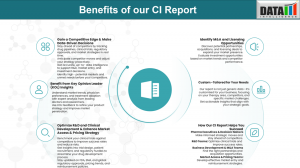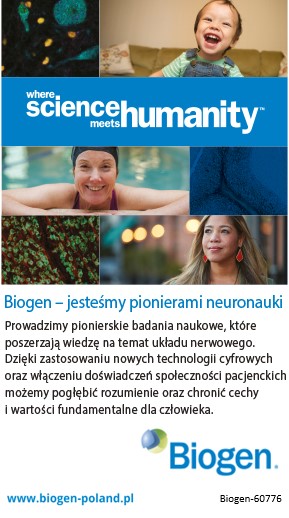Duchenne Muscular Dystrophy: The Next Frontier in Rare Disease Innovation |Competitive Intelligence | DataM Intelligence
Gene therapies, exon-skipping drugs and next-gen steroids are reshaping Duchenne muscular dystrophy care, targeting broader ages and mutations.
The global DMD therapeutics market was valued at around $2.3 billion in 2024, and all signs point to rapid expansion over the next decade. As promising therapies advance through clinical trials and into approval stages, the competition to deliver safer, broader, and more durable solutions is intensifying.
Download Free CI Sample Report: https://www.datamintelligence.com/strategic-insights/sample/duchenne-muscular-dystrophy-gene-therapy-competitive-edge-insights
Understanding DMD: A Devastating Diagnosis
DMD stems from mutations in the DMD gene, which result in a complete absence of dystrophin—a critical protein that helps maintain muscle cell integrity. Without it, muscle fibers deteriorate quickly. Symptoms typically emerge by age five, and by early adolescence, most boys are fully wheelchair-dependent. Respiratory support often becomes necessary in the teenage years, with heart complications developing shortly thereafter.
Although DMD is classified as a rare disease, it is the most common form of muscular dystrophy in children, affecting 1 in every 3,500 to 5,000 live male births globally. This makes it a rare disorder with substantial unmet clinical demand, particularly in the context of lifelong care and the growing pipeline of mutation-specific therapies.
Current Treatments: Progress, but Not a Cure
In recent years, regulatory agencies have approved several therapies that mark important progress—but these are far from cures. Exon-skipping drugs like Sarepta’s eteplirsen and golodirsen, and NS Pharma’s viltolarsen, enable the production of truncated but partially functional dystrophin in boys with specific genetic deletions. However, these treatments only apply to a subset of patients and require ongoing intravenous infusions.
Corticosteroids have been the mainstay of care for decades, with the introduction of Santhera’s vamorolone offering a better-tolerated alternative. Still, none of these drugs can reverse the disease or prevent long-term decline.
The most dramatic shift came in 2023 with the FDA’s approval of Sarepta’s gene therapy Elevidys, which delivers a micro-dystrophin gene via AAV vector to help restore dystrophin production. It’s a game-changer in principle, though current approval is limited to a narrow patient group—ambulatory boys aged 4 to 5 years—and long-term data on efficacy and safety is still evolving.
The Pipeline: Next-Generation Therapies on the Horizon
Looking ahead, the DMD pipeline is brimming with candidates that aim to overcome the limitations of existing treatments. Innovation is clustering around four key fronts:
Expanded Gene Therapies
1. Pfizer, Solid Biosciences, and Astellas are each pushing forward with gene therapy trials that target broader age ranges and leverage improved viral capsids for greater muscle specificity. The goal is to ensure that older or non-ambulatory patients, often excluded from initial trials, also benefit.
2. Gene Editing and CRISPR
While still early in development, gene editing is emerging as the holy grail of DMD treatment. By using CRISPR-based approaches to directly correct the genetic defect, companies like Vertex and CRISPR Therapeutics hope to achieve one-time, permanent solutions. Human trials could begin as early as 2026 if preclinical safety benchmarks are met.
3. Advanced Exon Skipping
Wave Life Sciences and Dyne Therapeutics are working on next-gen antisense oligonucleotides with improved precision, stability, and tissue targeting. These treatments may require fewer doses and cover more genetic variants.
4. Muscle Preservation and Anti-inflammatory Agents
Several investigational therapies target secondary pathways—such as myostatin inhibition and NF-κB modulation—to slow muscle degeneration regardless of dystrophin status. These could be used alongside gene therapies to improve outcomes.
The Business Landscape: What Will It Take to Lead?
While Sarepta currently holds a strong first-mover advantage, the market is quickly becoming more competitive. Pfizer’s gene therapy program is on track for late-stage data this year, and if it demonstrates strong efficacy with a wider label and scalable manufacturing, it could take meaningful share.
Meanwhile, Santhera’s vamorolone positions itself as a practical, safe option for nearly all patients, including those not eligible for genetic treatments. As real-world data accumulates, payers and providers will increasingly weigh cost, durability, and access—not just clinical novelty.
One major market gap remains: therapies for older, non-ambulatory patients. Most current trials exclude this population, leaving many families without hope of therapeutic benefit. Any company able to serve this group effectively could unlock significant clinical and commercial value.
Unmet Needs in the DMD Space
Despite progress, several core challenges persist:
- A Universal Cure: Most treatments remain mutation-specific. A mutation-agnostic, one-time therapy remains a critical goal.
- Earlier Diagnosis: Delays in diagnosing DMD often prevent early intervention. Newborn screening programs could change that.
- Long-Term Data: With many therapies approved under accelerated pathways, long-term safety and durability data is urgently needed.
- Affordability and Access: Pricing pressures are already mounting. AAV-based gene therapies are expensive to produce and even costlier to administer.
- Integrated Care: Beyond drugs, many patients lack access to comprehensive neuromuscular, respiratory, and psychosocial support systems.
Book Free CI Consultation Call: https://www.datamintelligence.com/strategic-insights/ci/duchenne-muscular-dystrophy-gene-therapy-competitive-edge-insights
What Success Looks Like: The Ideal Therapy Profile
The ideal DMD therapy would be systemic, safe, and single-dose—ideally administered before significant muscle loss. It would increase dystrophin expression across all mutation types, deliver meaningful gains in motor function and cardiac output, and require minimal follow-up care. Above all, it would be affordable enough to ensure widespread global access.
Companies that combine scientific ambition with thoughtful trial design, real-world data collection, and innovative pricing strategies will be best positioned to succeed in this complex but vital space.
Outlook: A Fast-Changing Market With High Stakes
With the market projected to reach over $8 billion by 2033, momentum in the DMD field is stronger than ever. Regulatory agencies are increasingly open to accelerated pathways for high-need conditions, and families are more engaged and informed than ever before. The next few years could reshape not just how DMD is treated—but how rare genetic diseases are approached across the board.
Read Related CI Report:
1. Fabry Disease | Competitive Intelligence
2. Hemophilia B | Competitive Intelligence
Sai Kiran
DataM Intelligence 4market Research LLP
+1 877-441-4866
email us here
Visit us on social media:
LinkedIn
X
Legal Disclaimer:
EIN Presswire provides this news content "as is" without warranty of any kind. We do not accept any responsibility or liability for the accuracy, content, images, videos, licenses, completeness, legality, or reliability of the information contained in this article. If you have any complaints or copyright issues related to this article, kindly contact the author above.
The Law Champ Announces New Resources for Personal Injury Victims in Brownsville and Cameron County
Resonac and PulseForge Unite to Advance Photonic Debonding for Next-Gen Semiconductor Packaging
Renowned pastry chef Amaury Guichon brings his artistry to the FIFA Club World Cup 2025™ Official Hospitality Programme
Kalendarium
Więcej ważnych informacji
 Jedynka Newserii
Jedynka Newserii

 Jedynka Newserii
Jedynka Newserii

Finanse

Europosłowie za wydłużeniem finansowania krajowych planów odbudowy o 1,5 roku. Apelują o większą przejrzystość wydatków
Instrument na rzecz Odbudowy i Zwiększania Odporności (RRF) – uruchomiony po pandemii COVID-19 – wygasa w sierpniu 2026 roku. Europosłowie w przyjętej niedawno rezolucji postulują, by przedłużyć ten termin o 18 miesięcy dla kluczowych projektów bliskich ukończenia. To szczególnie ważne dla Polski, która przez trzy lata – przez spór poprzedniego rządu z Komisją Europejską – miała zablokowany dostęp do środków z Krajowego Planu Odbudowy (KPO). Jednocześnie rezolucja wzywa do większej przejrzystości wydawanych funduszy.
Polityka
Prof. G. Kołodko: Druga prezydentura Trumpa zmienia Amerykę i świat na gorsze. Nie przyczynia się do rozwiązywania fundamentalnych światowych problemów

Zdaniem byłego wicepremiera i ministra finansów, prof. Grzegorz Kołodki, trumpizm wzmacnia pewne trendy nacjonalizmu, populizmu ekonomicznego i handlowego nie tylko w Ameryce, ale także w innych państwach. W ocenie ekonomisty Trump i trumpizm będą mieli negatywne skutki dla światowych procesów demograficznych, społecznych, kulturowych i ekonomicznych. Prezydentura Trumpa nie skupia się na rozwiązywaniu najważniejszych światowych problemów, takich jak m.in. migracja, zimna wojna, czy też ocieplenie klimatu.
Konsument
Branża opakowań nie traktuje unijnych regulacji jako zagrożenia. Widzi w nich impuls do rozwoju

W UE co roku wytwarza się ponad 2,2 mld t odpadów. Aby ograniczyć ich ilość, promowane jest przechodzenie na bardziej zrównoważony model, czyli gospodarkę o obiegu zamkniętym. W ramach pakietu zmian prawnych ograniczających negatywny wpływ działalności człowieka na środowisko nacisk położony jest w dużej mierze na producentów opakowań. Przedstawiciele branży podkreślają, że nowe regulacje to dla nich nie tylko nowe obowiązki, ale też okazja na zbudowanie przewagi konkurencyjnej.
Partner serwisu
Szkolenia

Akademia Newserii
Akademia Newserii to projekt, w ramach którego najlepsi polscy dziennikarze biznesowi, giełdowi oraz lifestylowi, a także szkoleniowcy z wieloletnim doświadczeniem dzielą się swoją wiedzą nt. pracy z mediami.









.gif)

 |
| |
| |
|